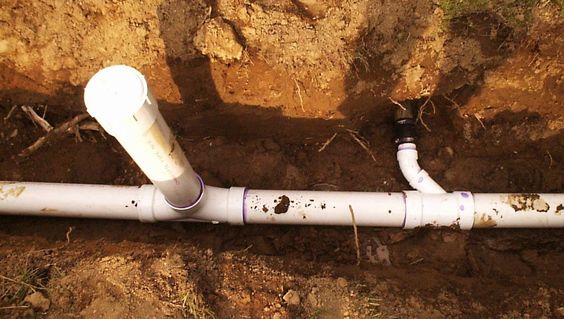Is My Main Sewer Line Clogged? Warning Signs & Solutions
Fixtures like Drains and pipes in your home are connected to the biggest piece of plumbing in your home is the main sewer line. Main sewer clogs are usually caused by a broken sewer pipe. A clog in the main sewer line gathers all the wastewater that tries to leave your home has nowhere to go and is forced back up other drain lines. Also, a severe clog can be a result of years of grease buildup that has blocked the pipe.
This article will cover the causes of sewer clogs, their warning signs, and how to fix them.
Popular causes of a clogged sewer line:
Almost every household has been in the unfortunate situation of having a clogged drain. A slow-running sink or bathtub. Thus, a single clog can be a pain, but it’s usually easier to fix.
- Severe pipe damaged:
When sewer pipes are broken, the sewage won’t be able to drain through the system properly. It then leads to immediate and frequent backups. Common causes of sewer pipe damage include Excessive or uneven water pressure. It can strain your pipes badly, contributing greatly to the wear and tear that it undertakes. A lot of pressure may cause pipe leaks over time. In some extreme conditions, high water pressure is the reason for pipe bursting.
- A sagging sewer line:
When sewer pipes are broken, sewage won’t drain properly, leading to immediate and frequent backups. This necessitates a Sewer Line Repair Service. Common causes of sewer pipe damage include excessive or uneven water pressure. Such pressure strains your pipes, contributing to wear and tear that can cause leaks or, in extreme cases, pipe bursting.
Throwing grease down the drain: Grease, fats, and oil are surely the biggest culprits when it comes to clogging lines. It’s a poor thing to pour grease, oil, or other fats down a drain. The grease when it cools down gets harder and sticks to your pipes forever.
Warning signs of sewer clogs:
f you’re concerned about your sewer line issue before it’s a serious problem, you should consider these few warning signs of sewer clogs:
- Slow draining sinks and showers: It could be due to a blockage in a sewer pipe. The water builds up and doesn’t flow through a sink.
- Sewer line keeps clogging: If you have a drain that constantly clogs, especially in the lowest level of your house, it could come from a break in your sewer pipe.
- Unusual sounds coming from your toilet: A gurgling sound can cause the toilet water to back up from the tub or shower. If you hear the gurgling sound coming out from your flush you should immediately call a professional.
- A lot of fixtures get clogged: If the toilet or shower drain keeps clogging because of an individual pipe blockage or through a sewer line issue. However, a very prominent sign of a sewer line issue is when multiple plumbing fixtures back up at the same time.
- Prominent lawn changes: Your sewer line passes through your lawn as it moves into the city’s sewage system. That is why you should be considerate about the changes to your lawn which include a sinkhole in your lawn that could be a sign of sewer line damage.
Let’s dive into replacement options:
While some drain cleaning and maintenance tasks can be safely performed by some individuals, sewer clog replacement tasks should always be performed by a professional plumber.
- Inspection through Video:
By hiring a professional you will be able to see where the problem is and experience faster and cost-effective repairs. Here Images are captured by the camera Which are transmitted to a device operated by the camera professional. Simultaneously, a radio transmitter on the camera records the physical location of the line and its depth from the surface. Through this, the appropriate repairs can be properly planned and implemented.
- Dig up the area surrounding the sewer line:
The replacement is performed using a backhoe to dig up the area surrounding the sewer line which will allow easy access to the affected area. When the replacement is done, the backhoe is used to refill the area and also restore your lawn.
- Trenchless sewer line repair:
This type of repair involves creating small access holes where the clogged pipe starts and ends. A new pipe is then pulled through the existing pipe. It then bursts the old pipe into pieces while laying the new pipe at the same time. Trenchless repairs cause less damage to yards and driveways than other repair methods. This breaks up the old pipe and the new pipe is installed in its place. Trenchless repair can save you time and money. It may not be the optimal choice for all kinds of pipes. A professional plumber will be able to evaluate the situation wisely.
Conclusion:
Dealing with sewer clogs can be a messy and tiring situation. This is because it is a complicated task and requires expertise. It is important to address the problem instantly to prevent further damage. If you’re having a sewer or drain issue it is not possible


